South Korea through the Senses
Part 1: Smell & Taste
Guest Post by Vasavi Koka
My journey to South Korea began long before my passport was stamped or my suitcase was packed.
In truth, it started quietly in the corners of my apartment, flicking through well worn novels, wandering through art galleries, and watching Korean films under the blue glow of a laptop screen late at night.
The peninsula, cradled between mountains and sea, had long held me in its orbit. Through literature, film, music, and art, I was drawn into its history, its struggles, and its celebrations, as a place both ancient and endlessly evolving into the technological powerhouse it is today.
Before I set foot there, I let my senses arrive first. I devoured historical fiction that carried me through the story soaked streets of old Seoul and into the cool shadows cast by the wide eaves of Joseon palaces.
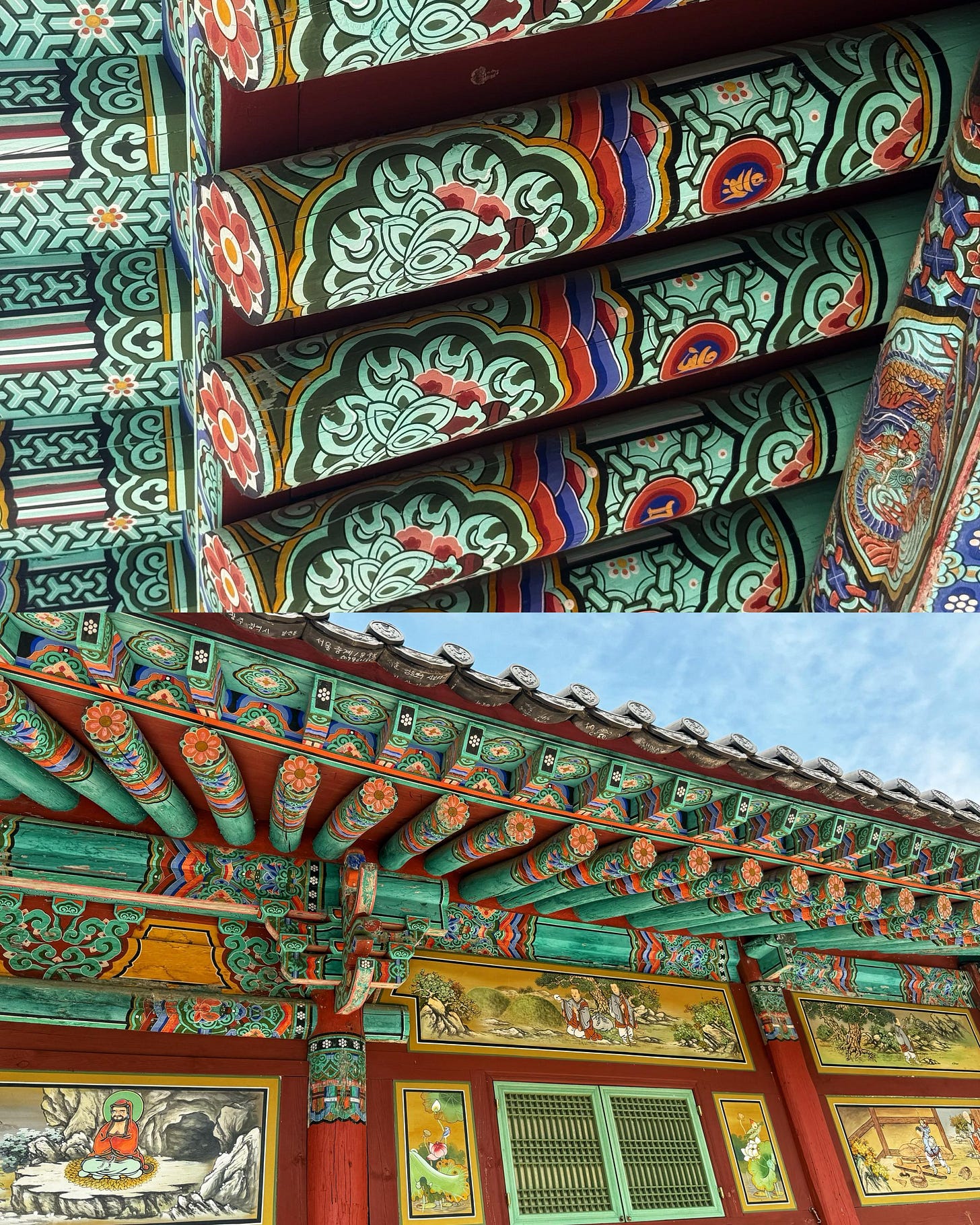
In exhibitions, I paused before hanbok silk so fine it seemed to carry the weight of centuries. At home, I lost hours to Korean films; moments of silence heavy with meaning, small gestures that spoke louder than dialogue, and laughter that arrived when I least expected it.
Even my kitchen became a kind of departure lounge: the deep red of gochujang clung to my spoon like lacquer; the sharp, fermented tang of kimchi filled the air, telling its own story and one of survival, resilience, and shared comfort.
By the time my plane ticket was booked, I felt like I’d already been travelling in South Korea for years. But now, I was ready to step into the world I had only imagined, and to let its sights, sounds, tastes, and textures leave an indelible mark on me.
Smell – Jeju Island
I began my sensory journey on Jeju Island. A beautiful volcanic land shaped by fire and sea. The black sand stretched like spilled ink against sharp, iridescent moss and fields, colours so vibrant they seemed to hum.
Scattered throughout the island stood dol hareubang - stone grandfather statues carved from volcanic rock. They kept quiet watch over the island, their wide eyes seemingly fixed on some distant past. The air tasted of salt and seaweed, sharp and bracing, carried on winds that tangled with the scent of drying fish.
From the rocky coves, the haenyeo - Jeju’s free-diving women emerged, sun-worn and sea-weathered, their voices carrying stories of the deep. Their presence lingered in the breeze, a living thread to the island’s tough, myth-laden spirit.
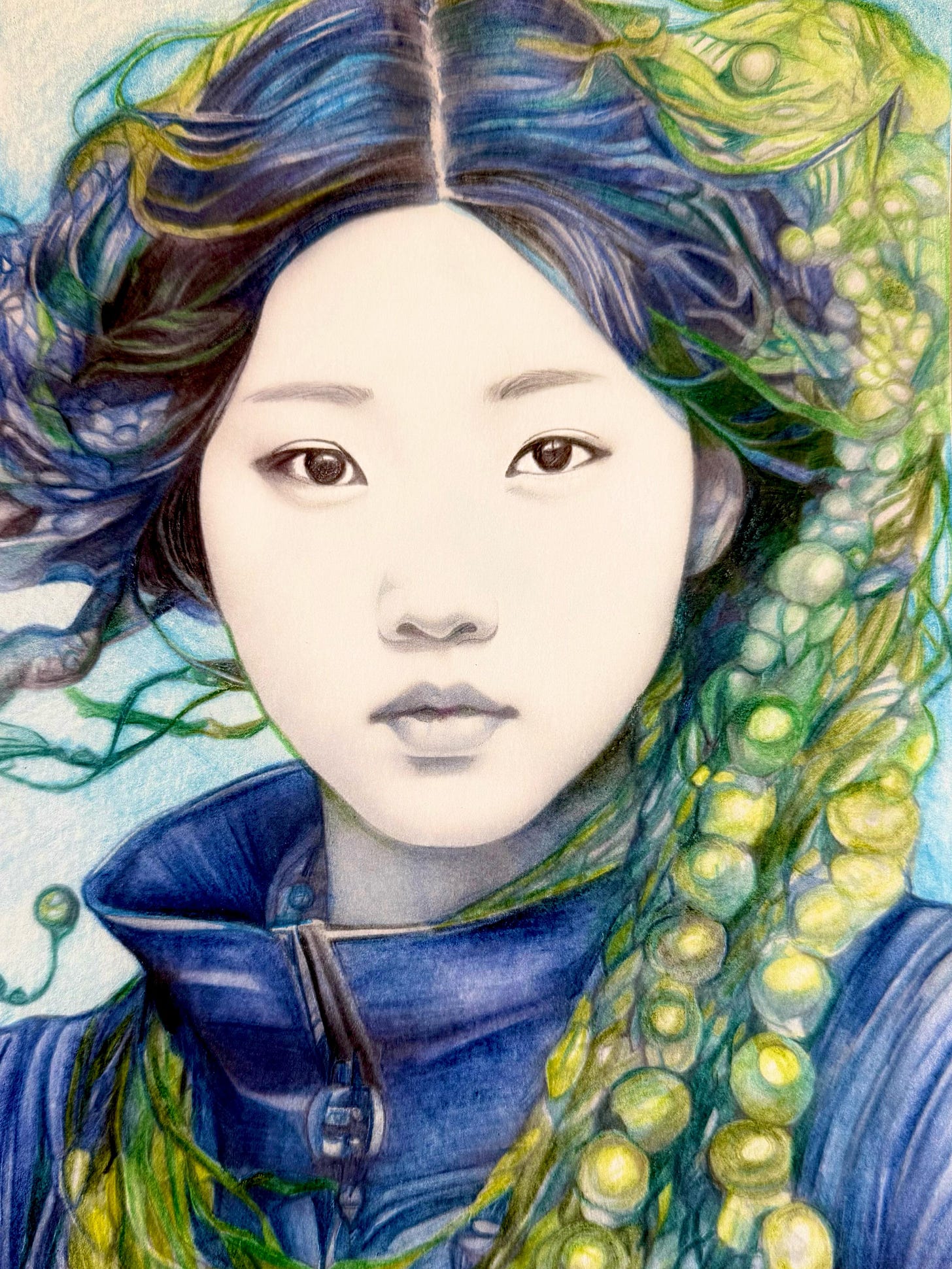
My first bowl of dolsot (stone pot) bibimbap arrived sizzling, comprising warm rice, caramelised vegetables, and a spicy spoonful of gochujang.
The spice reached my nose before my tongue. It was smoky, rich, and slightly sweet. It filled the space around me, clung to my fingers, and signalled the beginning of a different kind of journey.
Later, I wandered through gardens thick with blooms. The humid air was laced with the scent of flowers. After a short rain, the smell of damp earth and old bonsai trees rose in waves - clean, bittersweet, and grounding.
The air carried something deeper too, the quiet interweaving of growth, weathered memory, and a kind of silence that speaks only after a storm.
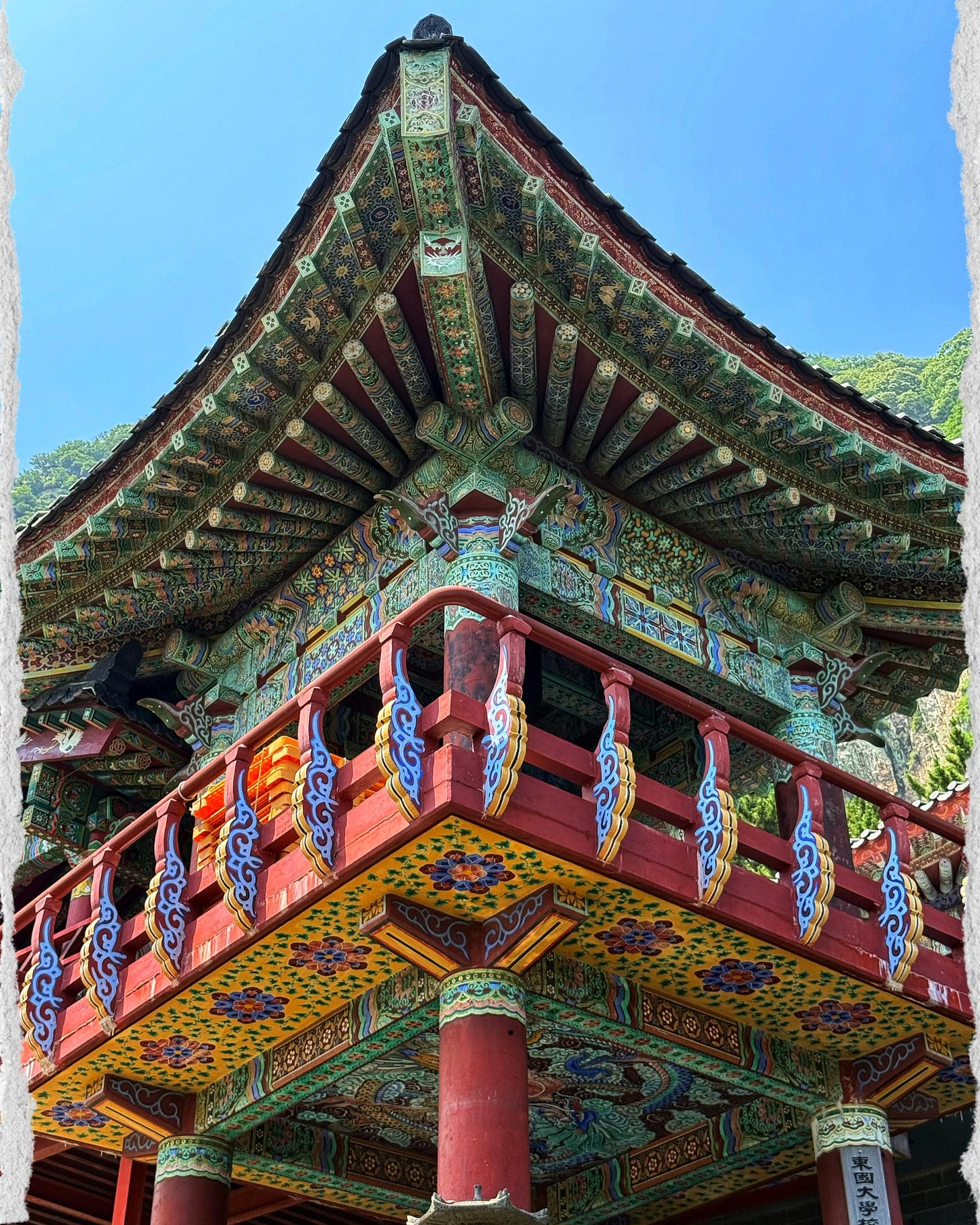
Taste – Seoul’s Markets and Temple Kitchens
My next stop was Gwangjang Market in Seoul, a labyrinth of food stalls, the air was alive with voices - the lyrical cadence of Korean rising and falling in waves, its intonation carrying emotion in every syllable, as if each phrase held more than just meaning.
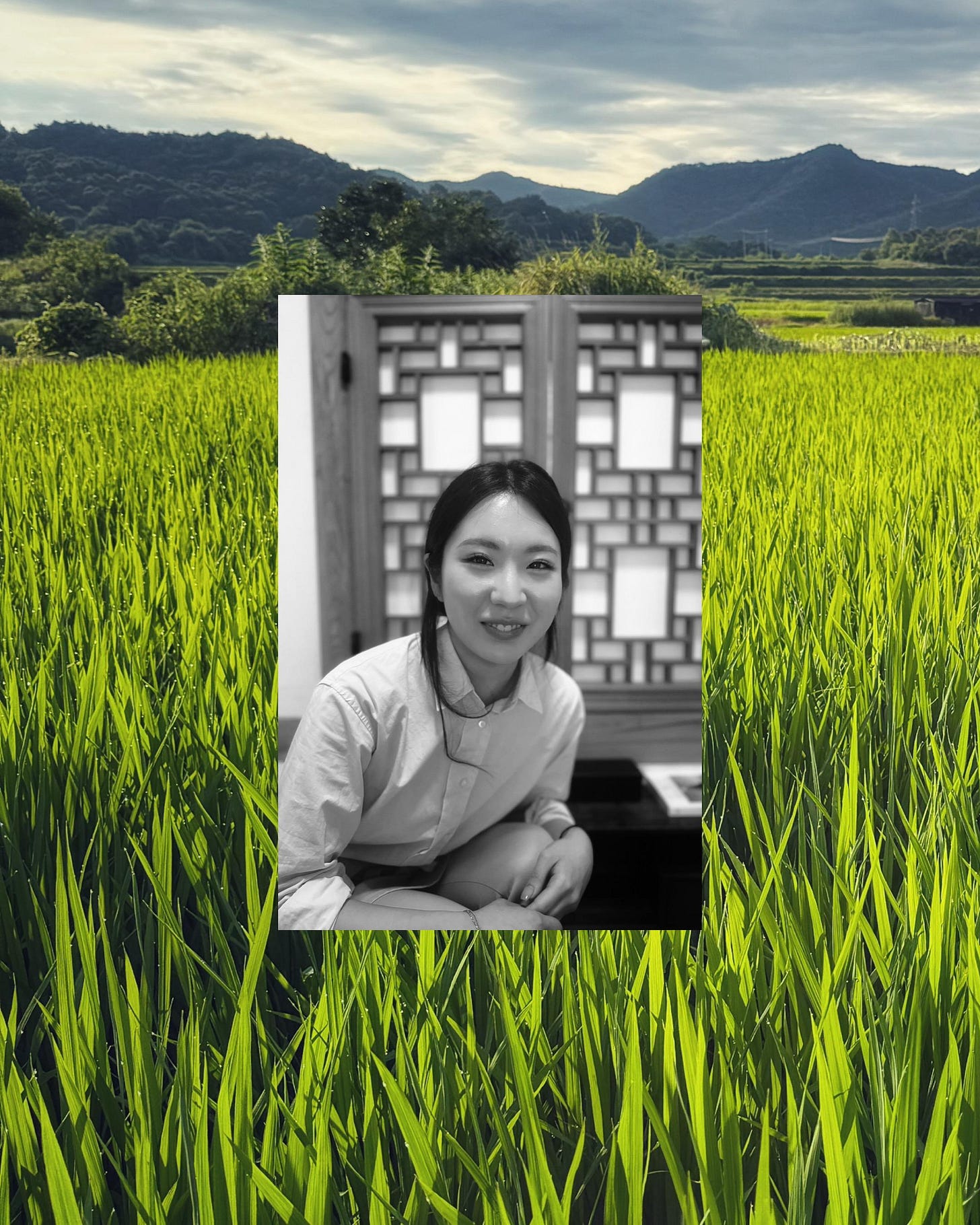
There was also the clattering pots, and the hiss of hot sesame oil. I came looking for kimbap, not just to eat it, but to discover more about the place where many say it began.
Tucked in one of the market’s corners was a tiny restaurant with a worn sign and space for only a few tables. Locals sat elbow to elbow, unhurried, each roll glistening on silver trays.
Kimbap, I learned, had humble beginnings. It was once a simple picnic food, it had evolved into something unmistakably Korean. The owner, now in her seventies, still made each roll by hand, brushing the seaweed with sesame oil so its nutty scent met the warm rice the moment it touched.
Beside the rolls, sat slices of bright yellow pickled radish - a tangy, slightly sweet bite that cut cleanly through the richness. Unassuming, but unforgettable.
I drifted through the rest of the market as it pulsed with energy. Garlic sizzled. Kimchi fermented in open vats. Meat popped on hot grills. The “Netflix noodle lady” worked swiftly, cutting dough into noodles with practised ease, the kind of speed that only comes from a lifetime of repetition.
Everywhere I looked, something steamed, seared, or simmered, but it was that small plate of kimbap, with its yellow radish and warm sesame scent, that stayed with me.
If the markets offered intensity, it was the banchan that taught me restraint. No two meals ever looked the same.
In one restaurant, the flavours were bright and crisp lotus root with a faint crunch, greens in sharp vinegar. In another, they were mellow and earthy, slow-cooked roots, fermented bean pastes, and vegetables tasting of mountain soil.
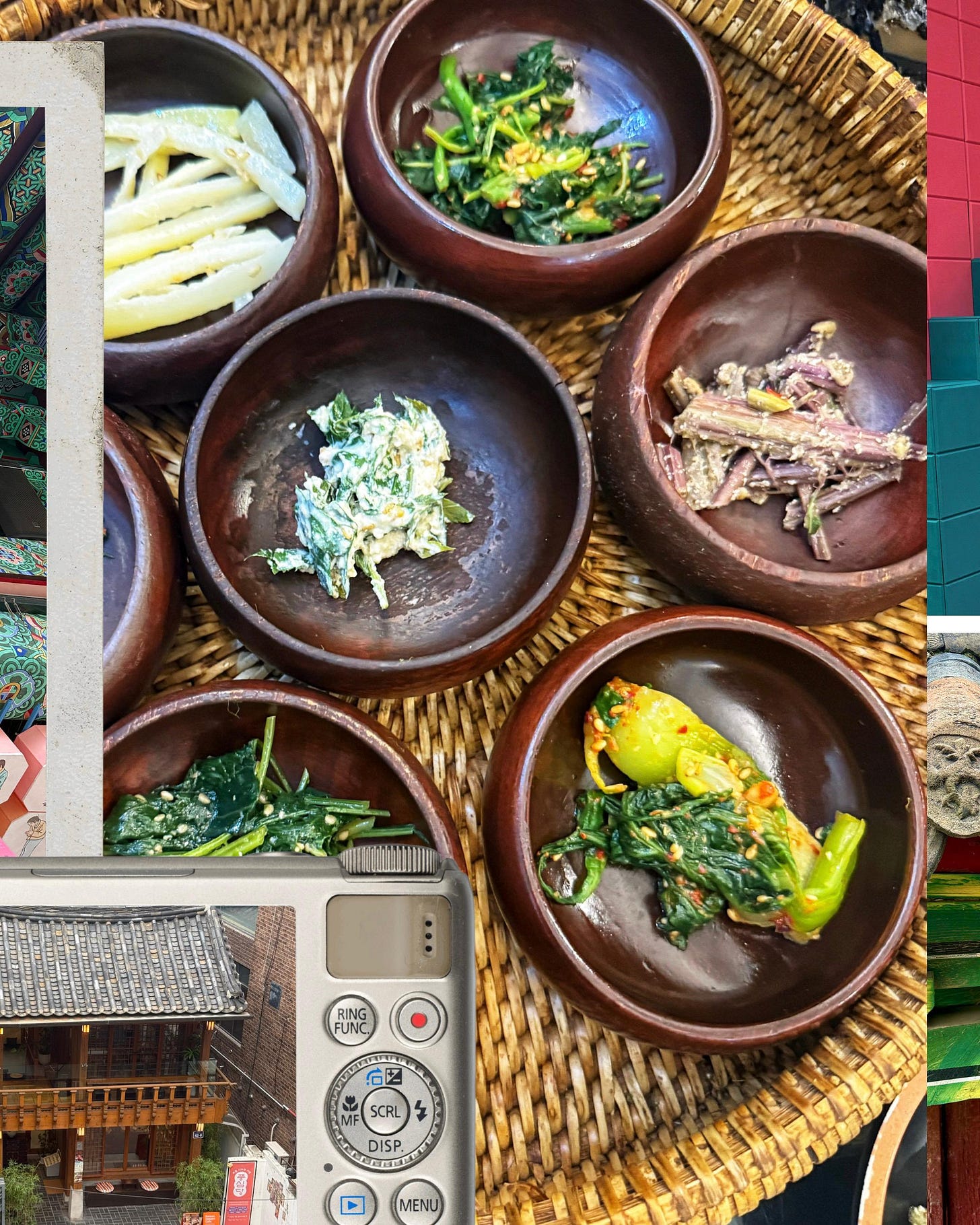
At a vegan temple kitchen tucked behind pine trees, the banchan were quieter still. No garlic, no onions - just subtle, layered flavours. Tofu crumbled with perilla leaves, shredded roots tasting faintly of rain, chewy seaweed with a coastal sharpness.
Each bite was modest but full of intent. It wasn’t about volume; it was about attention. I began to taste more slowly and more honestly. 🦋
This is Part 1: Sensing South Korea: Smell & Taste
Next is Part 2: Sensing South Korea: Sound, Touch, & Sight
⭐ Read More: Vasavi Koka - Nomad Profile: Art as Travel Inspiration
Guest Bio: Vasavi Koka is a London trained artist and international art educator, who trained at the University of Cambridge. She is the founder of The Koka Collective, a virtual travel studio sharing drawings and stories inspired by her journeys through 100+ countries. Follow Vasavi’s work here.


